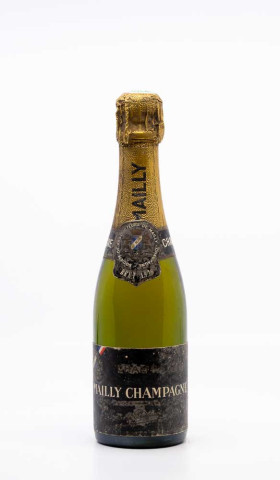
- Champagne

Synonymous with celebration and nobility, champagne (also known as Champagne wine) is an unique and Rare Wine that meets specific criteria. Its specific production method is what leads to its fine bubbles.
Champagne is the northernmost wine-producing region of France. It primarily spans the departments of Marne and Aube, where oceanic and continental climates converge. This location provides a microclimate perfect for grape maturation.
The Champagne vineyard stretches over very steep hillsides composed mainly of chalk, a porous rock that regulates soil moisture and imparts a unique salinity to the great wines of Champagne. The grape varieties are chosen according to the nature of the local terroir:
The result is an infinite variety of champagnes united under the same appellation.
The AOC Champagne is highly regulated, which is why no sparkling wine produced outside the appellation area can bear this designation. The finest terroirs offer a Premier Cru classification, and the best even achieve Grand Cru status.
The wine itself must adhere to a specific vinification process before becoming Champagne: exclusively manual harvesting, a second fermentation to make it effervescent (the prise de mousse), maturation in the bottle for at least 36 months with daily riddling, and more.
Before the cork is placed, the dosage is carried out with the liqueur d'expédition, a mixture of sugar and old wines that determines the sugar content and aromas, thus classifying the Champagne as nature, extra-brut, brut, extra-dry, sec, demi-sec, or doux.
It should be noted that alongside the prestigious Champagne appellation, the region also produces still wines under the appellations Coteaux Champenois and Rosé des Riceys.
Despite a single appellation, each Champagne has its own characteristics depending on the grape varieties used.
Chardonnay imparts elegance and finesse with its aromas of white fruits and flowers, while Pinot Noir adds body and aromas of red fruits. Pinot Meunier, round and supple, presents notes of yellow fruits and apple. Aging (up to 5 years) further deepens and complexifies these natural aromas.
We can also distinguish traditional non-vintage brut Champagne, which typically combines the three main grape varieties, from blanc de noirs Champagne, which is more vinous and made from red grape varieties. Blanc de blancs Champagne, made solely from Chardonnay or other white grape varieties (Petit Meslier, Pinot Blanc, etc.), is renowned for its mineral freshness, while rosé Champagne, colored by skin maceration, is fruity and delicate.
When produced from a single harvest, these Fine Wines are vintage. They are unique and Rare Wines that denote exceptional craftsmanship and quality.